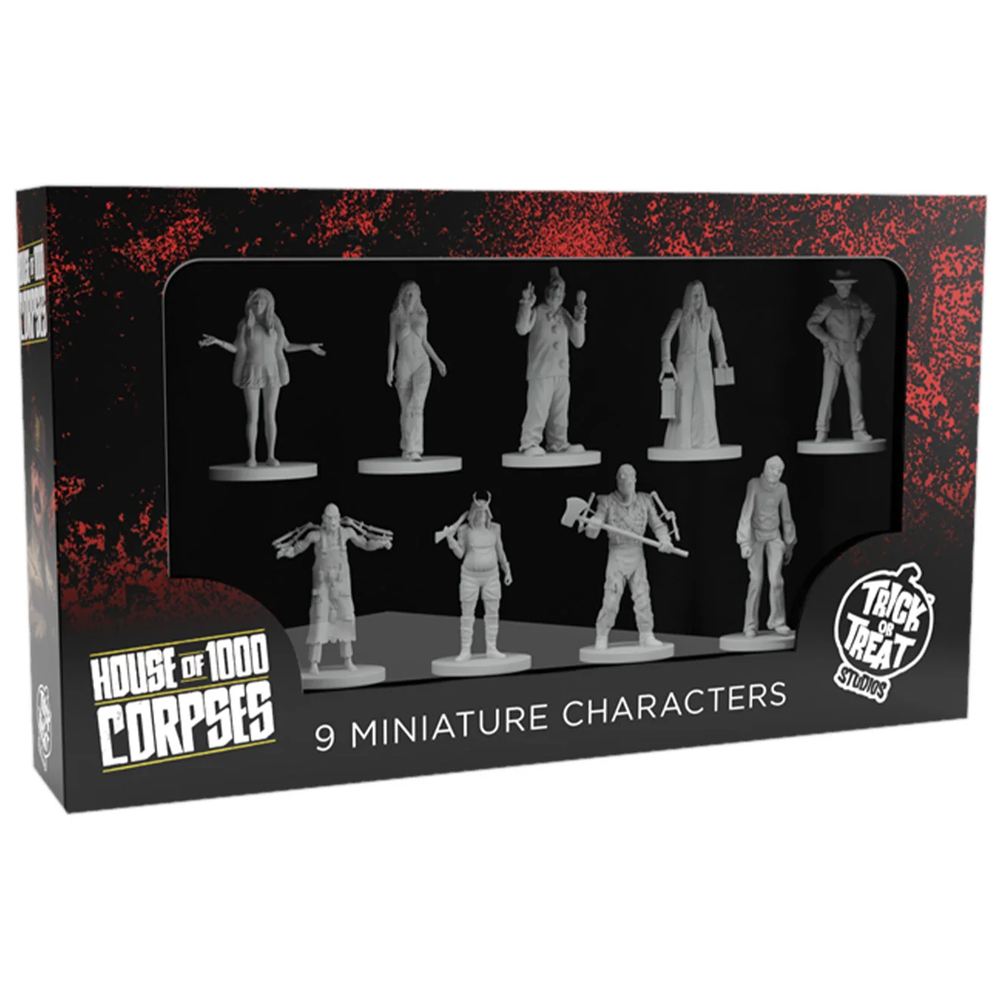The Grisly Allure of “house of 1000 Corpses”: A Deep Dive into Rob Zombie’s Horror Debut
Rob Zombie’s directorial debut, “House of 1000 Corpses,” is a film that unapologetically throws viewers headfirst into a chaotic and macabre world. Released in 2003, the film quickly garnered a reputation for its over-the-top violence, darkly comedic tone, and a cast of truly disturbing characters. While it certainly isn’t for the faint of heart, “House of 1000 Corpses” has earned a cult following for its unique blend of horror tropes, striking visuals, and a twisted family dynamic that leaves a lasting impression.
A Road Trip Gone Terribly Wrong
The film follows two young couples, Jerry and Denise, and Bill and Mary, who are traveling across the Texas countryside in search of local legends. Their quest leads them to a roadside attraction called Captain Spaulding’s Museum of Monsters and Madmen, a bizarre and unsettling establishment run by the clown-faced Captain Spaulding himself.

The Firefly Family: A Dynasty of Deviance
What the unsuspecting travelers don’t know is that Captain Spaulding is just the tip of the iceberg when it comes to the truly deranged family they are about to encounter. The Firefly family, a clan of sadistic killers, takes the couples captive, subjecting them to a night of unimaginable torture and terror.
Characters That Crawl Under Your Skin
One of the most memorable aspects of “House of 1000 Corpses” is its cast of characters. Each member of the Firefly family is a distinct and disturbing individual, contributing to the film’s unsettling atmosphere.
Captain Spaulding: The Clown Prince of Chaos

Played with gleeful malice by Sid Haig, Captain Spaulding is the face of the Firefly family’s madness. His clown persona adds a layer of dark humor to his depravity, making him both terrifying and strangely charismatic.
Baby Firefly: A Deadly Doll
Sheri Moon Zombie portrays Baby Firefly, a seductive and unpredictable member of the family. Her childlike demeanor masks a truly sadistic nature, making her one of the film’s most chilling figures.
Otis Driftwood: The Family’s Muscle
Bill Moseley delivers a bone-chilling performance as Otis Driftwood, the hulking and brutal enforcer of the Firefly clan. His scenes of torture are among the film’s most disturbing, showcasing the family’s utter lack of empathy.
Mother Firefly: The Matriarch of Mayhem
Karen Black plays Mother Firefly, the family’s manipulative and cunning leader. Her presence adds a layer of psychological manipulation to the family’s violence, highlighting the twisted power dynamics within the group.
Dr. Satan: The Surgeon of Suffering
While not a member of the immediate family, Dr. Satan is a figure shrouded in mystery and fear. His brief appearances in the film hint at a level of depravity that surpasses even the Firefly family’s, leaving a lingering sense of dread.
A Visual Feast of the Macabre
“House of 1000 Corpses” is a visually striking film, employing a variety of techniques to create a disturbing and surreal atmosphere. The film’s editing is frenetic and jarring, mirroring the chaotic nature of the Firefly family’s actions.
A Palette of Pain
The film’s color palette is often muted and desaturated, reflecting the bleak and hopeless world the characters inhabit. However, splashes of vibrant color, particularly in Captain Spaulding’s costumes and the family’s dwelling, serve to highlight the twisted nature of their reality.
Disturbing Tableaus
Zombie utilizes a variety of camera angles and close-ups to create a sense of unease and claustrophobia. The film is filled with disturbing imagery, from the Firefly family’s gruesome torture methods to the unsettling decorations that adorn their home.
A Soundtrack That Amplifies the Horror
The film’s soundtrack, composed by Rob Zombie himself, plays a crucial role in creating its unsettling atmosphere. The music blends heavy metal, industrial rock, and elements of classic horror scores, amplifying the film’s sense of dread and unease.
A Symphony of Suffering
The soundtrack often incorporates distorted sound effects and unsettling noises, further immersing the viewer in the film’s nightmarish world. The use of diegetic music, such as the songs played by Captain Spaulding’s Museum, adds a layer of ironic detachment to the film’s violence.
Themes of Isolation and Societal Decay
While “House of 1000 Corpses” is primarily a horror film, it also explores deeper themes of isolation and societal decay. The Firefly family exists on the fringes of society, operating by their own twisted code and preying on those who stray into their path.
The Breakdown of Order
The film suggests a breakdown of societal order, where the traditional boundaries between good and evil have become blurred. The Firefly family represents a complete rejection of societal norms, existing in a realm of pure chaos and violence.
A Divisive but Enduring Legacy
“House of 1000 Corpses” was met with mixed reviews upon its release, with some critics praising its visual style and others condemning its excessive violence. However, the film has since garnered a cult following, appreciated for its unique blend of horror, dark humor, and memorable characters.
A Precursor to More Mayhem
The film launched a franchise, with the Firefly family returning in the sequel, “The Devil’s Rejects.” “House of 1000 Corpses” remains a significant entry in Rob Zombie’s filmography, showcasing his distinctive visual style and his penchant for creating truly disturbing worlds.
Conclusion: A Descent into Darkness
“House of 1000 Corpses” is not a film for everyone. Its graphic violence and disturbing imagery can be difficult to stomach. However, for those with a taste for the macabre, the film offers a unique and unsettling experience. It’s a journey into the darkest corners of the human psyche, where the lines between sanity and madness become irrevocably blurred.
house of thousand corpses stl
